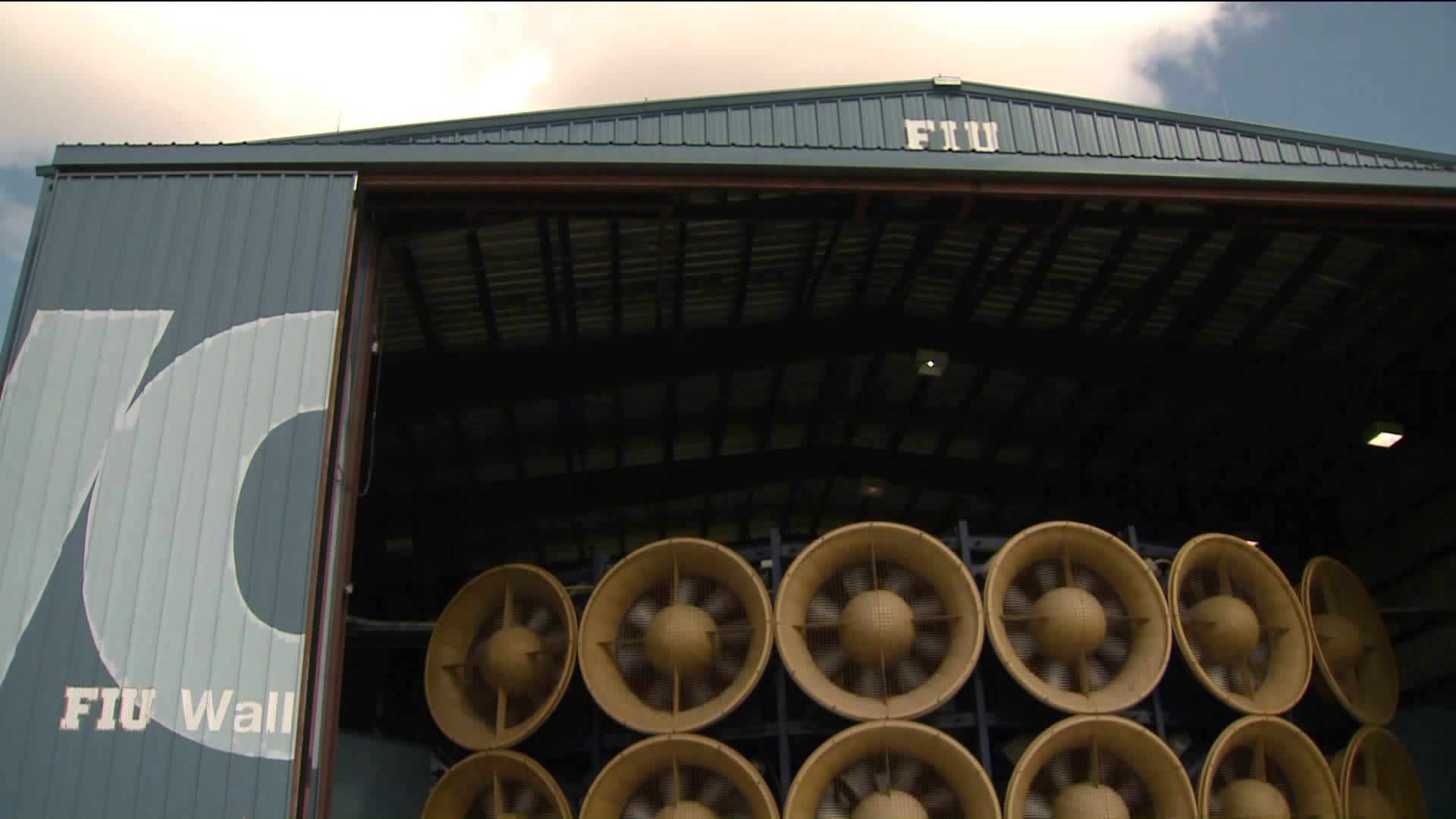MIAMI -- On the campus of the Florida International University School of Engineering stands a massive hangar with "WOW" written on the side, and it certainly gathers that type of reaction from visitors.
FIU's 'Wall of Wind' is essential to civil engineering, testing structures in realistic wind scenarios, both mundane and extreme.
Erik Salna is a Meteorologist and the Associate Director with the FIU Extreme Events Institute, and he gave us an up-close tour of this unique wind tunnel.
"We've created a Category Five hurricane so we can test products before they're in the marketplace. To have the wall of wind in South Florida makes sense, right? We're the hurricane capital of the United States. What we're doing here is being done nowhere else in the country," said Salna.
This thing is powerful with 12 large electric fans, each with 700 horsepower, helping to crank the wind speed up to 160 miles per hour. That simulates a Category Five hurricane, and it allows researchers to gather a surge of data with each test.
As fun as it is to see in action, academics come first with this research. Ioannis Zisis is the Co-Director of Wind Engineering Research, and he reminded us that the purpose of this behemoth is learning:
"This facility has received funding from the National Science Foundation, and now it is a national facility. So other universities and other researchers can come here to do testing and research."
The research conducted at the 'Wall of Wind' facility influences building codes for new construction, not only for Miami but Connecticut as well.
"We are helping and trying to get the word out. It helps all of us as consumers to buy homes wisely, thinking of hazards and hoping that'll drive the marketplace of development and buildings to raise the standard. As a smart home buyer, learn the risks, the hazards, of where you live," said Salna.
Civil engineers and home inspectors in Connecticut and Florida both agree that water is the biggest weather threat to homes. Whether it's falling from the sky or pooling up in our yards, being smarter about where and how we build our homes is essential.
"We have to stop this spin cycle of build, damage, rebuild. We cannot rebuild the same way or sometimes in the same place," said Salna. "It has to be built stronger; it has to be built in a smarter location. The nation needs to do that to be more resilient and stop this cycle of building weaker and building in places that are so exposed to the hazards, and it makes them a great risk."
Of course, the weather has always shaped the structures we live in, and we continue to fine-tune the designs so we can live in safer and more efficient homes. Much of that fine-tuning originates from a big building with a wall of wind in Florida.

